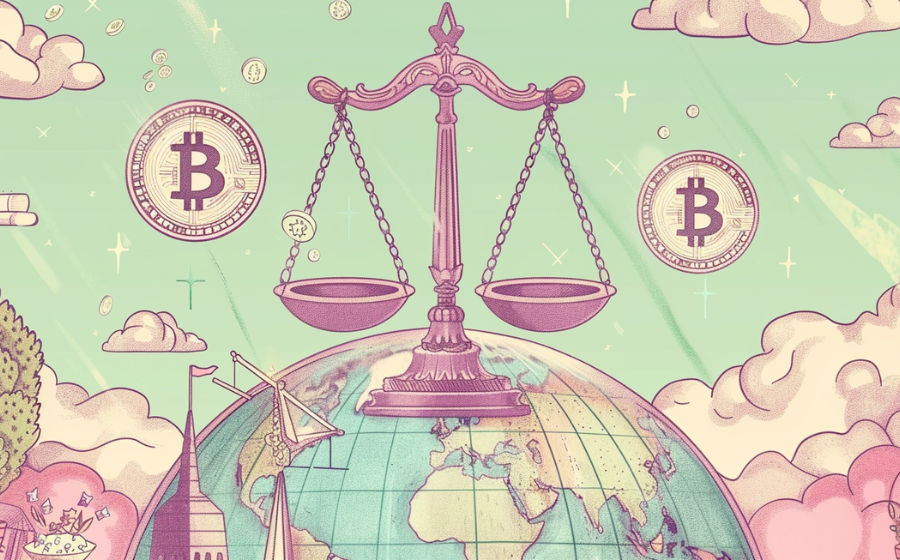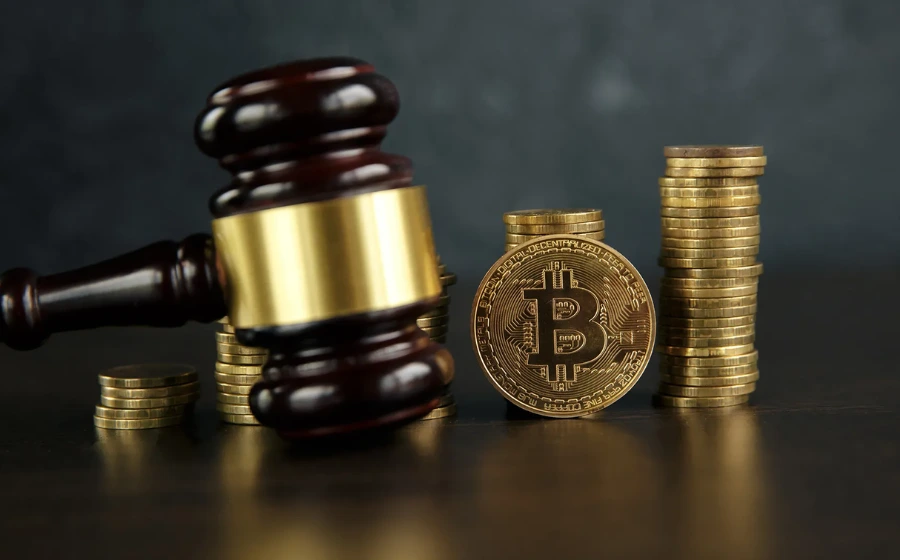
KEYTAKEAWAYS
- Global crypto regulations are tightening, focusing on transparency, investor protection, and AML/CFT measures. Licensing requirements for exchanges and issuers are becoming more stringent across jurisdictions.
- The EU's MiCA, Japan's PSA, Singapore's PSA, UAE's VARA, and Hong Kong's SFC are key regulatory frameworks shaping the crypto industry's future.
- Stablecoin regulations are emerging globally, while some jurisdictions like Japan are easing restrictions to promote Web3 and blockchain innovation.

CONTENT
Explore the latest cryptocurrency regulations in major jurisdictions. Learn about licensing requirements, AML measures, and investor protections in the EU, Japan, Singapore, UAE, and Hong Kong.
INTRODUCTION
As the cryptocurrency industry continues to evolve, it has become an emerging sector that cannot be ignored within the global financial market. However, countries around the world have varying attitudes and approaches to the regulation of cryptocurrencies, ranging from strict control to open embrace. The regulatory frameworks for this emerging industry are also constantly being adjusted and changed. Since the collapse of the FTX exchange and the issues with Hong Kong’s JPEX exchange, regulatory measures have been tightening, and the scrutiny on exchanges has increased. For instance, the European Union’s MiCA regulation aims to provide a unified regulatory framework that protects investors while also encouraging innovation. In Japan, the regulation of cryptocurrency trading is stringent under the Payment Services Act and the Financial Instruments and Exchange Act to ensure fairness and transparency in the market. However, the Japanese government has recently been advocating for deregulation and overcoming the industry’s development obstacles. In this rapidly developing field, the creation and adjustment of regulatory frameworks still face many challenges.
This article will explore in detail the latest developments and future trends in the regulation of cryptocurrencies in major countries and regions during the first half of 2024, including the EU’s MiCA regulations, Japan’s Financial Instruments and Exchange Act, Singapore’s Payment Services Act, and more. Through this article, we aim to provide readers with a comprehensive and in-depth understanding of the latest developments in global cryptocurrency regulation.
REGULATION OF CRYPTO ASSETS IN MAJOR JURISDICTIONS
1. European Union (EU)
A. Key Regulatory Measures:
- Regulatory Measures for Exchanges:
The Markets in Crypto-Assets (MiCA) framework is a comprehensive regulatory framework established by the European Union for the crypto-asset market. It requires all companies that provide crypto-asset services, including exchanges, to obtain authorization and oversight from the national financial regulatory authority of one of the 27 EU member states. The framework includes capital requirements, operational standards, and more. For example, exchanges must ensure “transparency and information disclosure” by publishing a fair and clear white paper to warn potential buyers of risks. Additionally, crypto-asset transactions conducted on trading platforms must meet transparency and information disclosure requirements. For crypto-asset custody services, strict security measures, risk management, and insurance are mandated. Moreover, MiCA introduces “market abuse regulations” to prevent unfair trading practices, such as market manipulation and insider trading, to ensure market integrity and fairness. Crypto-asset exchanges are required to implement effective systems to monitor and detect market violations and report relevant trading data to the authorities.
- Issuance Regulations:
Entities that issue crypto assets must prepare and publish a white paper that details the nature, risks, and use of the crypto assets and submit it to the competent authority of the member state. Regarding capital requirements, companies that issue stablecoins must maintain a 1:1 reserve ratio to ensure the protection of all holders’ rights. The issuance conditions stipulate that entities must meet the legal definition of a legal entity and conduct thorough market communication and information disclosure before issuing crypto assets.
- Anti-Money Laundering (AML) System:
The AML system requires crypto-asset service providers (CASP) to implement “information collection and transmission” measures, collecting and verifying information about the sender and recipient involved in transfers and passing this information to the recipient’s crypto-asset service provider during the transfer process. Additionally, CASPs must comply with AML/CFT regulations and be capable of tracking and reporting suspicious activities.
- Customer Asset Management:
CASPs must adopt stringent security measures to protect customer assets, ensuring their safety during transmission and storage. Furthermore, stablecoin issuers are required to maintain sufficient liquid reserves and provide holders with a permanent redemption right, ensuring that the reserves are fully protected even in the event of bankruptcy.
B. Regulatory Framework and Development Trends:
The MiCA regulation of the European Union came into effect in June 2023, but most provisions will be fully applicable from December 2024. The regulatory bodies, the European Securities and Markets Authority (ESMA) and the European Banking Authority (EBA), will play crucial roles in the regulation and enforcement, especially regarding stablecoins. The MiCA regulation aims to establish unified regulatory standards for the EU crypto-asset market, covering the following key aspects:
- Authorization and Regulation: All crypto-asset service providers must obtain authorization and be subject to regulation.
- Transparency and Disclosure: Issuing and trading crypto-assets must meet transparency and disclosure requirements.
- Market Abuse Prevention: The introduction of market abuse regulations prohibits market manipulation and insider trading.
- AML and CFT: Strengthened regulations for anti-money laundering (AML) and countering the financing of terrorism (CFT).
- Customer Asset Protection: Ensuring the security of customer assets and the adequacy of reserves.
Under the MiCA regulation, in addition to the comprehensive framework for exchanges mentioned above, there are specific requirements for the issuance of stablecoins. MiCA categorizes stablecoins into two types: Asset-referenced Tokens (ARTs) and Electronic Money Tokens (EMTs), with distinct requirements for each:
- Asset-referenced Tokens (ARTs): ART issuers must obtain authorization from the competent authority of an EU member state and publish a white paper detailing the nature and risks of the tokens. Issuers are required to maintain sufficient reserve assets to cover all ART holders’ rights, with the reserves held by an independent third party within five days of issuance. Additionally, issuers must meet the capital requirements set by regulatory bodies, have robust governance structures, risk management, and operational policies. They shall regularly disclose information to holders about the circulation of ARTs, the composition of reserve assets, and prepare a recovery plan for compliance in case of reserve shortfalls.
- Electronic Money Tokens (EMTs): EMTs can only be issued by authorized credit institutions or electronic money institutions. Issuers shall publish a white paper and submit it to the competent authority. EMT issuers are obligated to redeem EMTs at face value upon the holder’s request and cannot pay interest to holders. The funds received from issuing EMTs must be invested in assets denominated in the same currency.
Overall, both types of stablecoin issuers are subject to more stringent disclosure obligations compared to other crypto assets. If the stablecoin issuers are deemed “significant” by regulatory bodies, issuers must adhere to even stricter liquidity and redemption requirements and will be directly supervised by the European Banking Authority (EBA).
2. Japan
A. Key Regulatory Measures:
- Regulatory Measures for Exchanges:
In 2017, Japan revised the Payment Services Act to include cryptocurrency exchanges within its regulatory framework. Exchanges must register with the Financial Services Agency (FSA) and comply with related regulations, including capital requirements, prudent operations, and customer asset protection. The FSA also has the authority to sanction non-compliant exchanges. Japan mandates that customer assets should be kept separately from the exchange’s assets, and customer claims have priority over other creditors. Additionally, there are stringent review procedures for listing different cryptocurrencies and strict information disclosure requirements.
- Issuance Regulations:
Japan does not recognize “crypto assets” as currency. Companies issuing crypto assets that involve “securities” shall comply with the Financial Instruments and Exchange Act (FIEA) and related regulations. Those assisting in the distribution of security-type crypto assets shall obtain a license as a financial instruments business operator.
- AML System:
Under the revised Payment Services Act and the Act on Prevention of Transfer of Criminal Proceeds, cryptocurrency exchanges shall implement anti-money laundering (AML) measures, including customer due diligence, transaction monitoring, and reporting of suspicious activities. The Payment Services Act also includes related requirements, and Japan has established the Japan Virtual Currency Exchange Association (JVCEA), a self-regulatory body that enforces self-regulatory rules and implements certain travel rules.
- Customer Asset Management:
To offer asset management services for customers, companies with full control over user assets must apply for a license as a crypto-asset exchange under the Payment Services Act. The law requires customer assets to be managed separately from the exchange’s assets and mandates financial safeguards for customer assets, such as performance guarantees from banks. Additionally, on the technical side, Japan requires the use of high-security storage methods, such as keeping 90% of assets in cold wallets and implementing robust cybersecurity systems.
B. Regulatory Framework and Development Trends:
Japan has been early in regulating crypto assets, driven by the collapse of the Mt. Gox exchange, which prompted the establishment of a comprehensive and stringent regulatory framework. The primary regulatory body is the Financial Services Agency (FSA), and the main regulations are the Payment Services Act and the Financial Instruments and Exchange Act (FIEA). Japan’s strict regulations were often criticized for lacking innovation. However, after the FTX incident, Japanese FTX users were among the first to be compensated due to the robust regulations, which insulated them from the issues faced by the overseas parent company. This situation highlighted the strength of exchanges that comply with Japanese regulations and served as a source of user confidence.
In recent years, the Japanese government has been actively promoting the Web3 industry, viewing it as a key driver for Japan’s economic growth and a boost for Japan’s intellectual property (IP) sector. The government has introduced various initiatives, such as the NFT white paper and the Web3 white paper, and has revised several regulations, including tax laws on corporate holdings of crypto assets. In 2022, regulations on stablecoins were revised to establish a framework for their issuance, which came into effect in 2023. In May 2023, the Japanese cabinet passed a bill allowing venture capital funds to hold crypto assets, providing new fundraising channels for startups.
Overall, Japan is working to integrate stablecoins, NFTs, and IP applications, including the creation of regulations for decentralized autonomous organizations (DAOs). The government is pushing for regulatory easing in the Web3 sector, shifting from stringent risk control to a more industry-friendly approach. As a result, we can expect Japan to become increasingly supportive of the crypto asset industry.
3. Singapore
A. Key Regulatory Measures:
- Regulatory Measures for Exchanges:
Singapore classifies cryptocurrency exchanges as Digital Payment Token Service Providers (DPTSPs) under the Payment Services Act (PSA). DPTSPs must obtain the relevant licenses to operate legally. There are two types of licenses: the Standard Payment Institution license for smaller operations and the Major Payment Institution license for larger ones. The Standard Payment Institution license requires a minimum base capital of SGD 100,000, while the Major Payment Institution license requires a minimum base capital of SGD 250,000. Applicants for these licenses shall meet stringent requirements, including capital adequacy, internal controls, risk management, and anti-money laundering (AML) measures. Additionally, they shall have a physical presence in Singapore and ensure there are representatives available to handle customer inquiries and complaints.
- Issuance Regulations:
In terms of token issuance, the Monetary Authority of Singapore (MAS) considers the characteristics and features of the crypto asset tokens. If the tokens issued are deemed to be capital market products or securities, they fall under the jurisdiction of the Securities and Futures Act (SFA) of 2001, and the issuer must comply with the related disclosure and investor protection requirements. Therefore, the nature of the tokens (whether they are considered securities) will affect the stringency of the regulatory compliance required.
- AML System:
Singapore places high importance on AML and countering the financing of terrorism (CFT) in the crypto asset sector. In 2019, MAS issued the PSN02 notice to implement the travel rule in the crypto industry. DPTSPs are required to establish comprehensive customer due diligence (CDD), transaction monitoring, and suspicious activity reporting mechanisms to mitigate the risks of money laundering and terrorist financing. In April 2024, MAS revised the PSA to further enhance the AML/CFT regulatory requirements for DPTSPs, mandating that license applications must include a verification report on the entity’s business activities and AML/CFT compliance, which must be externally audited.
- Customer Asset Management:
According to the PSA, DPTSPs must take appropriate measures to protect customer assets, including the segregation of customer assets from the company’s own assets and maintaining proper account records. In July 2023, MAS introduced new regulations requiring DPTSPs to protect customer funds within a specified period to safeguard against the risk of customer fund loss in the event of the company’s bankruptcy.
B. Regulatory Framework and Development Trends:
Singapore’s regulatory framework for the crypto asset and blockchain industry includes several key laws and regulations, enforced and overseen by the Monetary Authority of Singapore (MAS). The primary legislation governing crypto asset service providers is the Payment Services Act (PSA), which outlines the licensing, operations, and AML/CFT obligations for the industry. Additionally, if the crypto assets or tokens issued by a provider qualify as “capital market products,” the activities fall under the Securities and Futures Act (SFA), which includes regulations on information disclosure and investor protection. Furthermore, if the crypto assets involve transactions linked to physical assets, the activities would be regulated under the Commodity Trading Act (CTA).
In April 2024, Singapore revised the PSA to enhance the AML/CFT regulatory requirements for Digital Payment Token Service Providers (DPTSPs). The revisions include mandatory external audits and customer fund protection measures to improve industry transparency and the safety of customer assets. Additionally, Singapore is considering including certain stablecoins under the PSA’s regulatory scope due to the widespread use of stablecoins and the associated concerns around risk management and reserve requirements.
Overall, Singapore is progressively refining and strengthening its regulatory framework for the crypto asset sector to promote orderly industry development while mitigating related risks. This approach aims to balance innovation and protection, ensuring the sector’s growth within a secure and transparent regulatory environment.
4. United Arab Emirates (UAE)
A. Regulatory Framework:
- Regulatory Measures for Exchanges:
Exchanges must obtain licenses from regulatory authorities such as the Virtual Assets Regulatory Authority (VARA) in Dubai and the Financial Services Regulatory Authority (FSRA) in Abu Dhabi. These exchanges are required to meet stringent capital requirements, undergo system audits, and implement comprehensive risk management and internal control standards. They must comply with anti-money laundering (AML) measures, know your customer (KYC) protocols, and counter-terrorist financing regulations. Additionally, exchanges are required to segregate customer assets from their own funds and take appropriate measures to protect customer assets. They must also adhere to market conduct rules, including prohibitions on insider trading and market manipulation.
- Issuance Regulations:
The issuance of virtual assets requires prior approval from the regulatory authorities. Issuers must fully disclose risks to investors and comply with relevant issuance rules. Some crypto assets may be classified as securities, in which case they must adhere to securities issuance regulations.
- AML System:
Crypto companies are mandated to implement stringent AML and KYC procedures, including customer due diligence. They must comply with both federal and local AML/CFT regulations, such as the Anti-Money Laundering Law. Regulatory authorities have the power to impose civil and criminal penalties on violators.
- Customer Asset Management:
Crypto companies must segregate customer assets from their own funds and implement appropriate measures to protect customer assets. They are required to fully disclose risks to customers and establish customer asset protection policies.
Overall, the UAE’s regulatory framework aims to ensure the integrity and security of the crypto asset market by enforcing rigorous standards and practices for exchanges, issuers, and service providers.
B. Regulatory Framework and Key Development Trends in the UAE
The UAE is composed of seven emirates forming a federal jurisdiction. There are also two financial free zones distinct from the federal jurisdiction: Abu Dhabi Global Market (ADGM) and Dubai International Financial Centre (DIFC). The Securities and Commodities Authority (SCA) is the federal regulatory authority responsible for overseeing the financial markets, securities, commodities, virtual assets, and listed entities within the UAE. Within the financial free zones, the Financial Services Regulatory Authority (FSRA) in ADGM regulates financial markets and virtual assets, while the Dubai Financial Services Authority (DFSA) in DIFC oversees the financial markets and virtual assets within DIFC.
Regarding crypto asset regulations, in March 2022, Dubai established the Virtual Asset Law, leading to the creation of the Dubai Virtual Asset Regulatory Authority (VARA). VARA’s jurisdiction is extensive, covering the regulation and licensing of issuers, exchanges, custodians, and management service providers within Dubai, excluding DIFC. Since there is no unified system between VARA and DIFC, companies wishing to operate in both the UAE and DIFC must obtain separate licenses.
For crypto businesses looking to enter the UAE market, the regulatory framework typically involves three models:
- VARA Regulations: VARA identifies seven different categories of virtual asset activities, covering a range of services such as advisory, brokerage, custody, exchange, lending, payment and remittance, and investment management services. Any Virtual Asset Service Provider (VASP) engaged in regulated activities must obtain a license from VARA.
- FSRA Regulations in ADGM: FSRA has its regulatory framework and court system based on common law and conducted in English. It allows interim measures for crypto-related cases, such as freezing orders and asset disclosure orders.
- DFSA Regulations in DIFC: DFSA follows a common law framework and provides measures to handle crypto-related legal matters within DIFC.
Dubai aims to become a leading region in the crypto asset industry. In November 2023, ADGM introduced the 2023 Distributed Ledger Technology (DLT) Foundations Regulations, the world’s first dedicated framework for blockchain foundations and decentralized autonomous organizations (DAOs). This framework provides a clear legal structure for the issuance and management of tokens, supports various governance methods, including token voting and smart contracts, and does not require physical presence, allowing entities to relocate from other jurisdictions. In March 2024, DIFC announced new Digital Assets Law and New Security Law, providing a comprehensive legal framework for digital assets, ensuring their legal characteristics as property, and strengthening DIFC’s secure transaction system. After two years of improving its financial regulatory framework, FATF removed the UAE from the grey list in April. The UAE is committed to promoting the orderly development of the crypto industry and creating a flexible regulatory framework to protect investor rights and maintain financial stability, indicating continued growth and development in this sector.
5. Hong Kong
A. Key Regulatory Measures:
- Regulatory Measures for Exchanges:
Hong Kong’s regulatory measures for cryptocurrency exchanges include the following aspects. Currently, Hong Kong has adopted a mandatory licensing system. As of June 1, 2023, virtual asset trading platforms must apply for a license from the Securities and Futures Commission (SFC) to legally operate virtual asset trading services. Exchanges shall comply with the amendments to the Anti-Money Laundering and Counter-Terrorist Financing Ordinance (AMLO) and follow various SFC guidelines, including the “Guideline on the Regulatory Framework for Virtual Asset Trading Platforms.” This guideline covers standards and requirements for investor protection, asset custody security, customer asset segregation, avoidance of conflicts of interest, and cybersecurity. Additionally, for investor protection, there are restrictions on retail investors during the initial licensing phase, limiting them to trading mainstream cryptocurrencies such as Bitcoin and Ethereum.
- Issuance Regulations:
The regulations for Initial Coin Offerings (ICOs) focus on several key aspects. In 2019, the SFC issued guidelines for Security Token Offerings (STOs), requiring cryptocurrencies that qualify as “securities” under the Securities and Futures Ordinance to be regulated by Hong Kong’s securities laws. Companies issuing crypto assets and tokens must comply with existing securities regulations and obtain the relevant licenses from the SFC.
- AML System:
In December 2022, the Hong Kong Legislative Council passed amendments to the AMLO, introducing a licensing framework for Virtual Asset Service Providers (VASPs) that came into effect in June 2023. The new regulations require VASPs to comply with the travel rule to ensure transaction information transparency and traceability. VASPs must also obtain a license from the SFC and adhere to AML and Counter-Terrorist Financing (CFT) regulations.
- Customer Asset Management:
Hong Kong has stringent regulations for the management of customer assets by cryptocurrency exchanges, including Asset Custody Security: Exchanges must ensure the safe custody of customer assets and implement customer asset segregation to avoid conflicts of interest and Licensing Requirements: Exchanges must obtain the VASP license from the SFC and comply with related asset management regulations.
B. Regulatory Framework and Key Development Trends:
Hong Kong’s cryptocurrency regulatory framework includes the following key components:
- Mandatory Licensing System: All Virtual Asset Service Providers (VASPs) must apply for a license from the Securities and Futures Commission (SFC).
- AML and CFT Compliance: VASPs must comply with the amended Anti-Money Laundering and Counter-Terrorist Financing Ordinance (AMLO) and the travel rule, and obtain a license from the SFC. Virtual Asset Service Providers (VASPs) are businesses that provide services related to virtual assets. These services include but are not limited to (i) Buying and Selling Virtual Assets: Assisting clients in trading virtual assets; (ii) Storing and Transferring Virtual Assets: Providing custody services for virtual assets and assisting clients in transferring them; and (iii) Operating Virtual Asset Exchanges: Running platforms that allow clients to trade virtual assets and offer related automated trading services.
- Investor Protection: Various guidelines issued by the SFC cover standards and requirements for investor protection, asset custody security, customer asset segregation, conflict of interest avoidance, and cybersecurity.
- Issuance Regulations: Guidelines for Security Token Offerings (STOs) require that cryptocurrencies classified as “securities” under the Securities and Futures Ordinance be regulated by Hong Kong’s securities laws.
- Recent Developments:
Recent topics in Hong Kong’s cryptocurrency regulation include the JPEX scandal in September 2023, which prompted the Hong Kong government to enhance information dissemination and investor education and establish a special task force to combat illegal activities. Additionally, restrictions that initially limited investments to professional investors were relaxed, allowing retail investors to trade mainstream cryptocurrencies on licensed platforms. Since the implementation of Hong Kong’s licensing regime, numerous cryptocurrency platforms have actively applied for licenses, indicating a positive market response and confidence in Hong Kong’s position as a crypto asset hub in the Asia-Pacific region. These measures and regulations demonstrate Hong Kong’s forward-thinking and rigorous approach to cryptocurrency regulation, providing a solid legal foundation for the healthy development of the cryptocurrency industry.
CONCLUSION
From the above discussions, we can observe commonalities in various countries’ regulatory approaches to crypto assets, including increasing emphasis on information transparency, investor asset protection, and ongoing stringent measures against anti-money laundering (AML) and counter-terrorist financing (CFT). The European Union’s MiCA regulations require all companies providing crypto asset services to obtain authorization and undergo regulation, ensuring that exchanges and issuers adhere to transparency and information disclosure requirements. Japan’s Payment Services Act has long mandated that cryptocurrency exchanges register and comply with capital requirements and customer asset protection rules. Singapore’s Payment Services Act (PSA) regulates Digital Payment Token Service Providers (DPTSP), requiring them to obtain licenses and comply with strict capital and AML/CFT regulations. The UAE’s Virtual Asset Law and related regulatory authorities mandate that exchanges and issuers comply with capital requirements and market conduct rules to protect customer assets, using a flexible licensing approach. Hong Kong implements a mandatory licensing system for operators, requiring platforms to adhere to AML and CFT regulations and ensure the safe custody of customer assets.
In this article, we conclude that the current trend in crypto asset regulation is increasingly integrating traditional financial market rules. For example, MiCA introduces measures to prevent market manipulation and insider trading, ensuring market fairness. In addition to AML/CFT requirements, regulations are strengthening user asset protection and daily operational standards, continually improving the existing regulatory framework. On the topic of stablecoins, recent developments in Japan, the EU, and Singapore have included stablecoins under their regulatory frameworks, establishing relevant regulations. Following the JPEX exchange incident, Hong Kong has further enhanced investor protection and promoted the legal operation of more cryptocurrency platforms. The UAE and its two financial free zones are continuously working to become leading regions in the crypto asset industry by improving legal structures, strengthening the role of regulatory authorities, and promoting new regulations to foster the stable development of the crypto industry.
Due to the series of exchange collapses between 2022 and 2023, regulatory measures are expected to become increasingly stringent, making it harder for offshore exchanges to survive. However, previously overly strict regions are also gradually relaxing regulations. For example, the Japanese government has shifted its attitude, beginning to promote the Web3 industry and amending regulations to support the development of emerging technologies and applications. Therefore, this article believes that future regulations will become more consistent, reducing regulatory disparities between countries. Furthermore, AML obligations have become an unavoidable foundational requirement that operators must continuously monitor to avoid penalties.
Hopefully, we can foresee stablecoins continuing to serve as a crucial infrastructure for the industry, with regulations being fully implemented. Considering the inherently cross-border nature of blockchain technology, future regulatory developments will likely not only become more consistent but also increasingly focus on strengthening international cooperation to address the rapidly changing market demands and technological advancements.
▶ Buy Bitcoin at BingX
Sign up to claim 5,000+ USDT in rewards & 20% off trading fees!
Looking for the latest scoop and cool insights from CoinRank? Hit up our Twitter and stay in the loop with all our fresh stories!

















